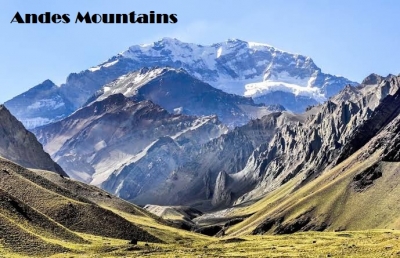
The Andes Mountains are the longest continental mountain range in the world. They extend 7,242 km across seven countries and are often referred to as the ‘spine’ of South America. They are the highest mountain range after the Himalayas with the tallest peak Aconcagua reaching a height of 6,961 m.
The Andes can be divided into three sections, Southern Andes, Central Andes and Northern Andes. There are great variations in climate depending on altitude, distance from the equator and distance from the sea. The northern section is usually rainy and warm, the southern section is rainy and cool and the central section is dry. These variations give rise to incredible biodiversity with 30,000 species of plants and 600 species of mammals and 1,700 types of birds.
Another unique feature of the Andes is the Andean Volcanic Belt. Around 160 active volcanoes, including the world’s highest volcano, Ojos del Salado, are located here. The Amazon rainforest, which produces 20 per cent of our planet’s oxygen, is also partly located here. Remnants of the ancient Incan Empire can be found in these mountains, including the magnificent ruins of Machu Pichu and the city of Cuzco. The world’s largest salt desert – Salar de Uyuni is located in the Bolivian Andes. The world’s largest river – the Amazon originates in the Peruvian Andes.
Picture Credit : Google



